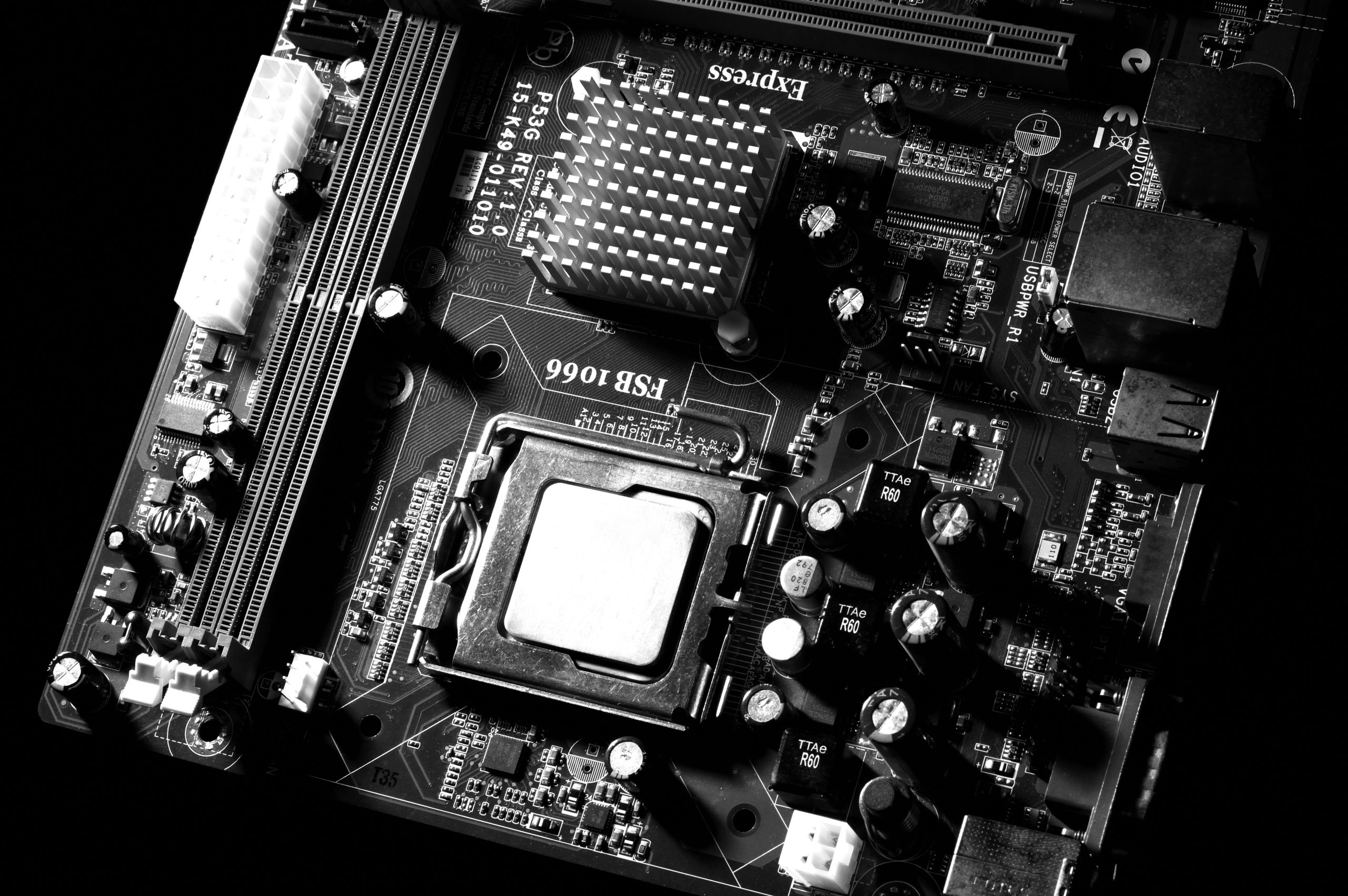In the digital tapestry of the 21st century, semiconductors are the foundational threads. These tiny, intricate marvels of engineering – chips – are the lifeblood of our modern existence, powering everything from the smartphones in our pockets and the cars we drive to the vast data centers humming with artificial intelligence and the critical infrastructure that underpins global economies. Yet, the intricate dance of their creation, a ballet of microscopic precision and colossal investment, is increasingly playing out on a geopolitical stage fraught with tension. At the heart of this drama lies a critical, and perhaps perilous, concentration of power, particularly in one small island: Taiwan.
To understand the stakes, we must first peek into the Lilliputian world of semiconductor manufacturing. The “process node” – names like 14nm (nanometer), 7nm, 5nm, and the current cutting-edge 3nm – refers to successive generations of technology. Historically, this denoted transistor feature sizes, though today it’s more a marketing label. The rule of thumb, however, remains: a smaller node generally means more transistors packed into the same space, leading to exponentially greater performance and energy efficiency. Think of it as upgrading from a country road to a multi-lane superhighway; more traffic (data) can flow faster and more smoothly. The leap from 14nm (commercialized around 2014) with its pioneering FinFET 3D transistor structures to the 7nm class (around 2018) roughly doubled transistor density. The 5nm node (circa 2020) pushed boundaries further using Extreme Ultraviolet (EUV) lithography – a revolutionary and exceedingly complex printing technique – for many critical layers, offering another ~1.8x density increase over 7nm. Now, the 3nm generation (introduced 2022-2023) represents the current pinnacle, squeezing in about 60% more transistors than 5nm. Each step is a monumental engineering feat, costing billions and pushing the laws of physics.
The Global Titans: A Tale of Three Regions
Currently, the global landscape of advanced chip manufacturing is dominated by a few key players, with Taiwan standing as a veritable colossus.
Taiwan: The Undisputed Monarch Taiwan, and specifically Taiwan Semiconductor Manufacturing Co. (TSMC), holds a staggering dominance. The island manufactures over 60% of the world’s total semiconductors by revenue and, crucially, over 90% of the most advanced chips (sub-10nm). As of 2023, virtually all commercial 3nm chips and the lion’s share of 5nm chips originated from TSMC’s fabs. With a foundry market share hovering around 65% in late 2024, TSMC is the undisputed king. Its recipe for success? A pioneering pure-play foundry model (making chips for other companies), relentless R&D investment, and an almost unerring track record of execution, delivering new nodes on time with high yields. This has made TSMC the indispensable partner for tech giants like Apple, NVIDIA, AMD, and Qualcomm. Even Intel, a titan in its own right, outsources some production to TSMC. For instance, Apple’s A17 Pro chip in the iPhone 15 Pro is built on TSMC’s 3nm process, and its M-series Mac processors rely on TSMC’s 5nm and 3nm technology. This near-monopoly on the bleeding edge – producing 92% of the world’s 5nm-and-below chips in 2021 – underscores Taiwan’s critical role. Samsung in South Korea is the only other major player at the leading edge, but with a market share around 10-13% and persistent struggles with yields compared to TSMC, it remains a distant second.
China: The Ambitious Challenger Running into Headwinds China has poured immense resources into developing its domestic semiconductor industry, aiming for self-sufficiency. While it has made strides in mature nodes (28nm and above), it lags significantly at the cutting edge. The leading Chinese foundry, SMIC (Semiconductor Manufacturing International Corp.), achieved 14nm mass production around 2019. More recently, SMIC surprised the industry by producing a 7nm-class chip (notably for Huawei’s Kirin 9000S SoC) despite lacking access to EUV lithography tools, a feat achieved through more complex and less efficient Deep Ultraviolet (DUV) multi-patterning. This ingenuity, however, comes at a steep price: significantly lower yields and higher costs. Reports in late 2024 indicated yields for Huawei’s Ascend 910C AI accelerator on SMIC’s 7nm-class process were as low as 20%, far from commercially viable. As of 2025, China has no capability to manufacture 5nm or 3nm chips. Stringent U.S. export controls, particularly the ban on EUV lithography machine sales to China, have created a formidable barrier, effectively capping China’s advance around the 7nm node for now. While SMIC holds about 6% of the global foundry market, this is predominantly from mature nodes.
United States: The Former Champion Staging a Comeback The U.S., historically a leader in chip design and manufacturing (with Intel at the forefront), fell behind in cutting-edge fabrication in the past decade. Intel stumbled at its 10nm node, allowing TSMC and Samsung to surge ahead. As of early 2025, the most advanced logic fabrication on U.S. soil is Intel’s 7nm-class process (branded “Intel 4”). No U.S.-headquartered company currently mass-produces at 5nm or 3nm. Intel is on an aggressive “five nodes in four years” roadmap, aiming to reclaim leadership with its “18A” process (roughly equivalent to a 2nm class) slated for high-volume manufacturing in 2025. This plan involves new transistor architectures like RibbonFET (Intel’s version of Gate-All-Around, or GAA) and innovative backside power delivery. However, until this materializes, the U.S. remains dependent on overseas fabs for the most advanced chips. Fabless giants like Apple, NVIDIA, and AMD, all American companies, rely entirely on TSMC or Samsung. The U.S. CHIPS Act, providing $52 billion in subsidies, aims to revitalize domestic manufacturing, with TSMC and Samsung also building advanced fabs in Arizona and Texas respectively, though these are not yet fully operational at the most cutting-edge nodes. GlobalFoundries, another major U.S. manufacturer, exited the race for leading-edge nodes in 2018, focusing on specialized processes at 12nm and above.
The World’s Most Vulnerable Supply Chain
This concentration of manufacturing prowess, especially in Taiwan, creates a profoundly fragile global semiconductor supply chain. Several chokepoints exist:
- Taiwan’s Fabrication Dominance: As highlighted, over 90% of advanced logic chips come from Taiwan. Any disruption – natural disaster, geopolitical conflict, or internal issues – could cripple global electronics production.
- ASML’s Lithography Monopoly: ASML, a Dutch company, is the world’s sole manufacturer of EUV lithography machines, indispensable for nodes 7nm and below. This gives ASML, and by extension the Netherlands, immense leverage. The entire advanced chip ecosystem hinges on ASML’s ability to produce and deliver these $150 million+ machines.
- Japanese Material and Equipment Supremacy: Japan plays a critical, often unseen, role. Japanese firms like Shin-Etsu and SUMCO supply about 60% of the world’s silicon wafers. They also dominate the photoresist market (light-sensitive chemicals crucial for lithography), with companies like JSR and Shin-Etsu providing nearly 90% of EUV photoresists. Tokyo Electron (TEL) holds a ~90% global share in coater/developer tracks. A disruption in Japan could sever these vital supply lines.
- U.S. Design and IP Leadership: The U.S. leads in Electronic Design Automation (EDA) software (Cadence, Synopsys) and chip IP (e.g., ARM, though UK-based, its architecture is ubiquitous).
The 2021 auto chip shortage, caused by a confluence of factors including insufficient mature node capacity, starkly illustrated this fragility, costing the auto industry over $200 billion.
Scenario: The Unthinkable – Taiwan Offline
The gravest concern is a prolonged disruption of Taiwan’s fabrication capacity, particularly in the event of a military conflict. The consequences would be nothing short of catastrophic:
- Immediate Supply Shock: Production of Apple’s processors, NVIDIA’s AI GPUs, AMD’s CPUs, and countless other critical chips would halt. Global supply of cutting-edge chips (<=5nm) could plummet by 80-90% overnight.
- AI and Computing Freeze: The AI revolution, heavily reliant on Taiwanese-made GPUs, would stall. Data centers couldn’t expand, limiting computational progress.
- Consumer Electronics Crisis: Smartphones, PCs, gaming consoles, and a vast array of gadgets would face severe shortages, sending prices soaring and delaying launches for years.
- Automotive Industry Paralysis: Already sensitive to chip shortages, car production globally could grind to a halt, far exceeding the impact of the 2021 crisis.
- Global Economic Devastation: The Hudson Institute estimates a one-year loss of Taiwan’s semiconductor industry could cost the global economy around $1 trillion, with the U.S. economy alone taking a $1.6 trillion hit (roughly 8% of U.S. GDP). This would likely trigger a deep global recession, potentially more severe than the 2008 financial crisis or the COVID-19 shock. U.S. logic chip prices could jump 50-60%.
The ripple effects would touch every industry, setting off a domino cascade of delays, lost sales, and factory shutdowns. It would take an estimated $450 billion and at least three years, optimistically, to build replacement capacity elsewhere.
The Race for Resilience
The extreme concentration of advanced semiconductor manufacturing in Taiwan is a ticking clock for the global economy. Recognizing this vulnerability, governments worldwide, particularly in the U.S. and Europe, are now aggressively pursuing policies and investing billions to onshore and diversify chip production. Intel’s ambitious roadmap, coupled with new fabs from TSMC and Samsung on U.S. soil, signals a potential shift. However, these are long-term endeavors. TSMC itself is planning its next-generation 2nm (N2) node for 2025, likely keeping it at the forefront.
The journey from raw silicon to the intelligent heart of our devices is a testament to human ingenuity. Yet, its current structure, heavily reliant on a few critical nodes and geographical locations, presents a profound systemic risk. The quest for a more resilient and geographically dispersed semiconductor supply chain is no longer just an economic imperative; it’s a matter of global technological security and stability. The silicon veins of our world are currently pulsing strongly, but their reliance on a few critical arteries makes the entire system dangerously susceptible to shock. The coming years will be crucial in determining whether the world can successfully re-engineer this vital circulatory system before a major crisis forces its hand.
Disclaimer: Important Legal and Regulatory Information
This report is for informational purposes only and should not be construed as financial, investment, legal, tax, or professional advice. The views expressed are purely analytical in nature and do not constitute financial guidance, investment recommendations, or a solicitation to buy, sell, or hold any financial instrument, including but not limited to commodities, securities, derivatives, or cryptocurrencies. No part of this publication should be relied upon for financial or investment decisions, and readers should consult a qualified financial advisor or regulated professional before making any decisions. Bretalon LTD is not authorized or regulated by the UK Financial Conduct Authority (FCA) or any other regulatory body and does not conduct activities requiring authorization under the Financial Services and Markets Act 2000 (FSMA), the FCA Handbook, or any equivalent legislation. We do not provide financial intermediation, investment services or portfolio management services. Any references to market conditions, asset performance, or financial trends are purely informational and nothing in this report should be interpreted as an offer, inducement, invitation, or recommendation to engage in any investment activity or transaction. Bretalon LTD and its affiliates accept no liability for any direct, indirect, incidental, consequential, or punitive damages arising from the use of, reliance on, or inability to use this report. No fiduciary duty, client-advisor relationship, or obligation is formed by accessing this publication, and the information herein is subject to change at any time without notice. External links and references included are for informational purposes only, and Bretalon LTD is not responsible for the content, accuracy, or availability of third-party sources. This report is the intellectual property of Bretalon LTD, and unauthorized reproduction, distribution, modification, resale, or commercial use is strictly prohibited. Limited personal, non-commercial use is permitted, but any unauthorized modifications or attributions are expressly forbidden. By accessing this report, you acknowledge and agree to these terms-if you do not accept them, you should disregard this publication in its entirety.



